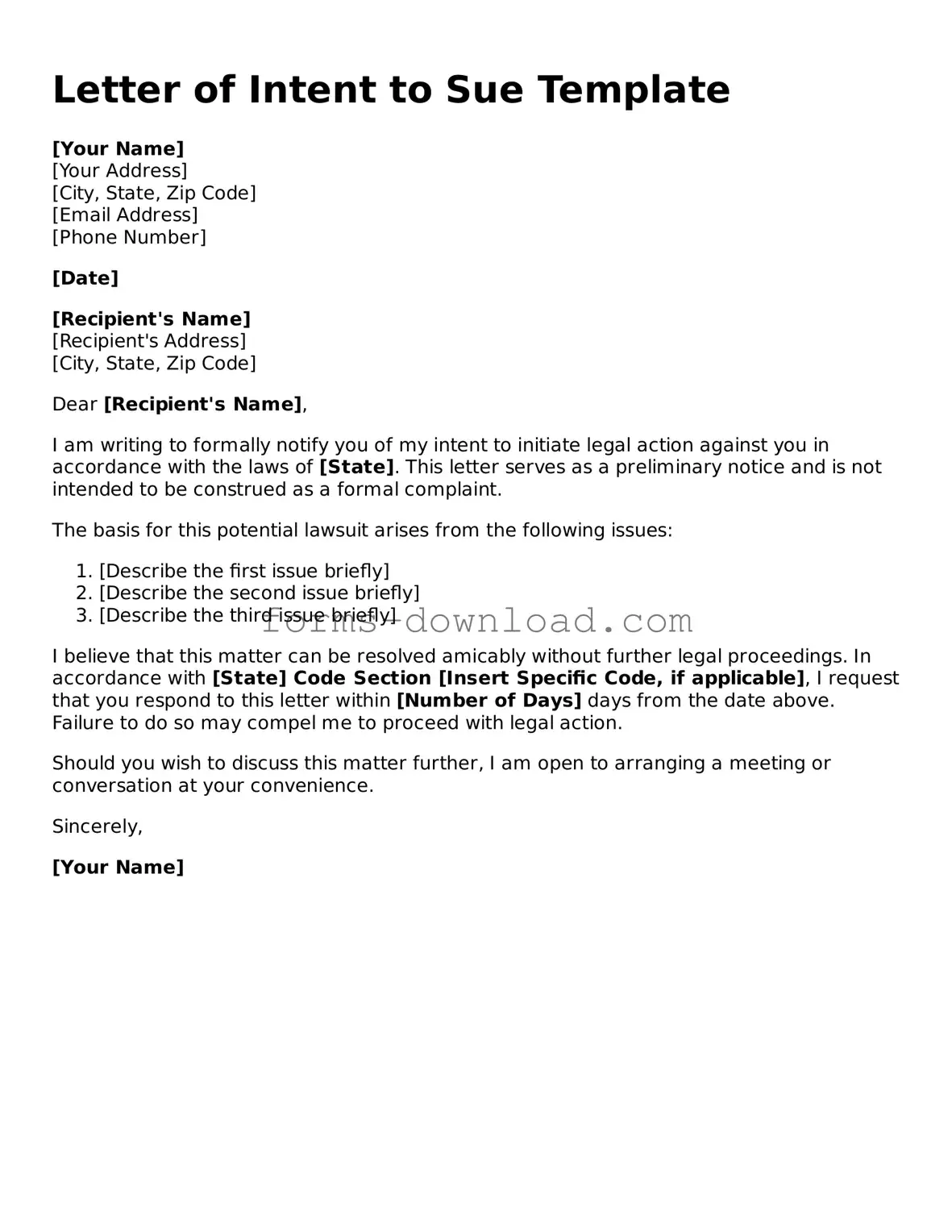Letter of Intent to Sue Template
[Your Name]
[Your Address]
[City, State, Zip Code]
[Email Address]
[Phone Number]
[Date]
[Recipient's Name]
[Recipient's Address]
[City, State, Zip Code]
Dear [Recipient's Name],
I am writing to formally notify you of my intent to initiate legal action against you in accordance with the laws of [State]. This letter serves as a preliminary notice and is not intended to be construed as a formal complaint.
The basis for this potential lawsuit arises from the following issues:
- [Describe the first issue briefly]
- [Describe the second issue briefly]
- [Describe the third issue briefly]
I believe that this matter can be resolved amicably without further legal proceedings. In accordance with [State] Code Section [Insert Specific Code, if applicable], I request that you respond to this letter within [Number of Days] days from the date above. Failure to do so may compel me to proceed with legal action.
Should you wish to discuss this matter further, I am open to arranging a meeting or conversation at your convenience.
Sincerely,
[Your Name]
